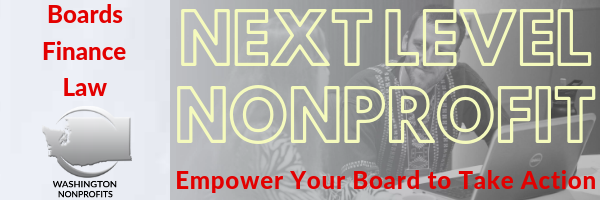
Second, watch this video
We talked about the Balance Sheet, a snapshot of your organization’s finances at any time. This is one of two financial reports a board member should get on a regularly basis. Watch this video to refresh your understanding of a Balance Sheet and what 3 things you should be thinking about.
Third, take Two Steps Forward
We invite you to take two steps forward from where you are now. Here are two topics to explore and bring back to your organization.
- Deepen your understanding of the three lenses of decision-making. If you have attended the Boards in Gear training, you know that boards can look at any issue through three lenses: fiduciary (oversight), strategic (foresight), and generative (insight). Boards often start with oversight and move into strategic thinking (then generative discussions). Some issues are better going the other way: start trying to make sense of an issue and then work towards financial stewardship.
- Become a financial leader. In “An Executive Director’s Guide to Financial Leadership,” Kate Barr and Jeanne Bell outline 8 “must do’s” to move from management to leadership. Have your board read the article. As an activity, hand out the last page and invite people to circle the issue they feel is most needed or they most want to work on.
Fourth, share what you’ve learned
Find the entire Finance Unlocked for Nonprofits curriculum, videos, kit, and key documents here. Invite fellow board members to watch a video.
Have questions? Connect with your peers in the nonprofit sector through the Next Level Nonprofit LinkedIn group.

